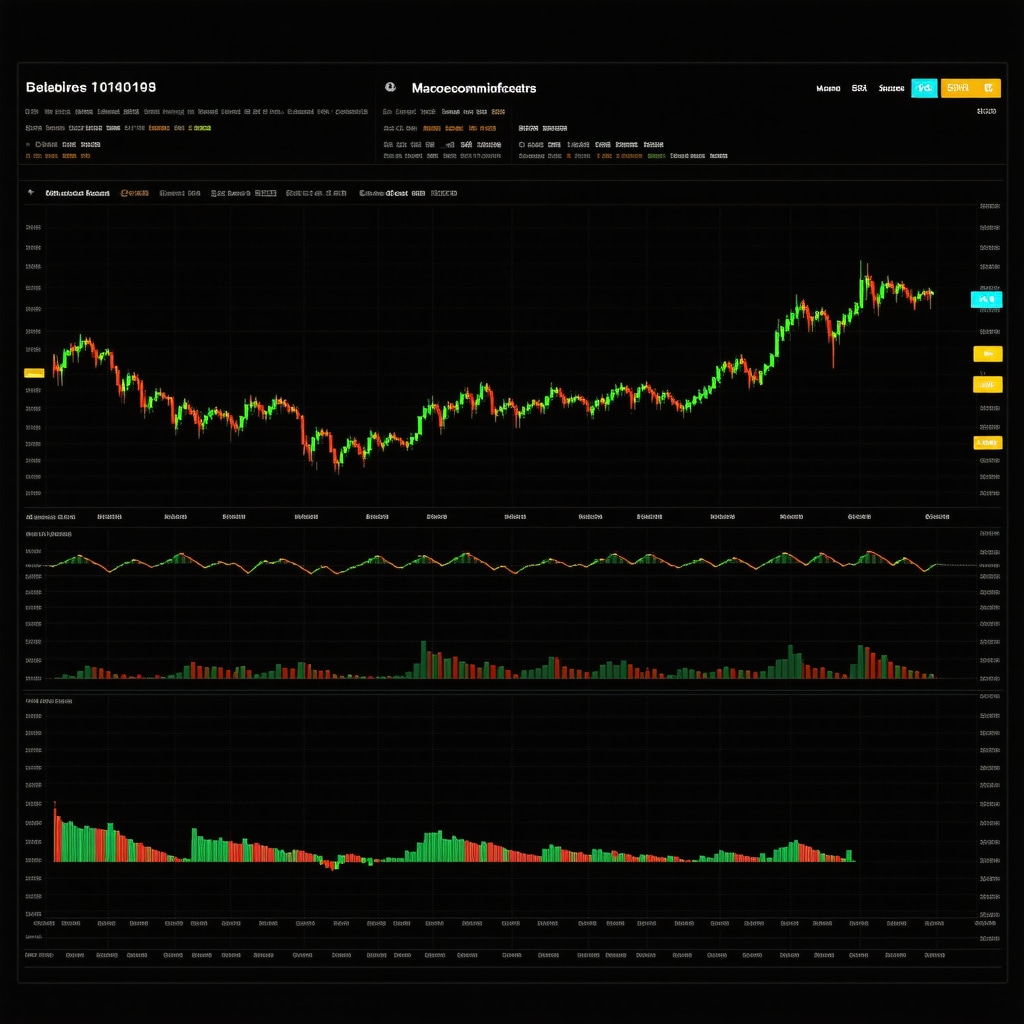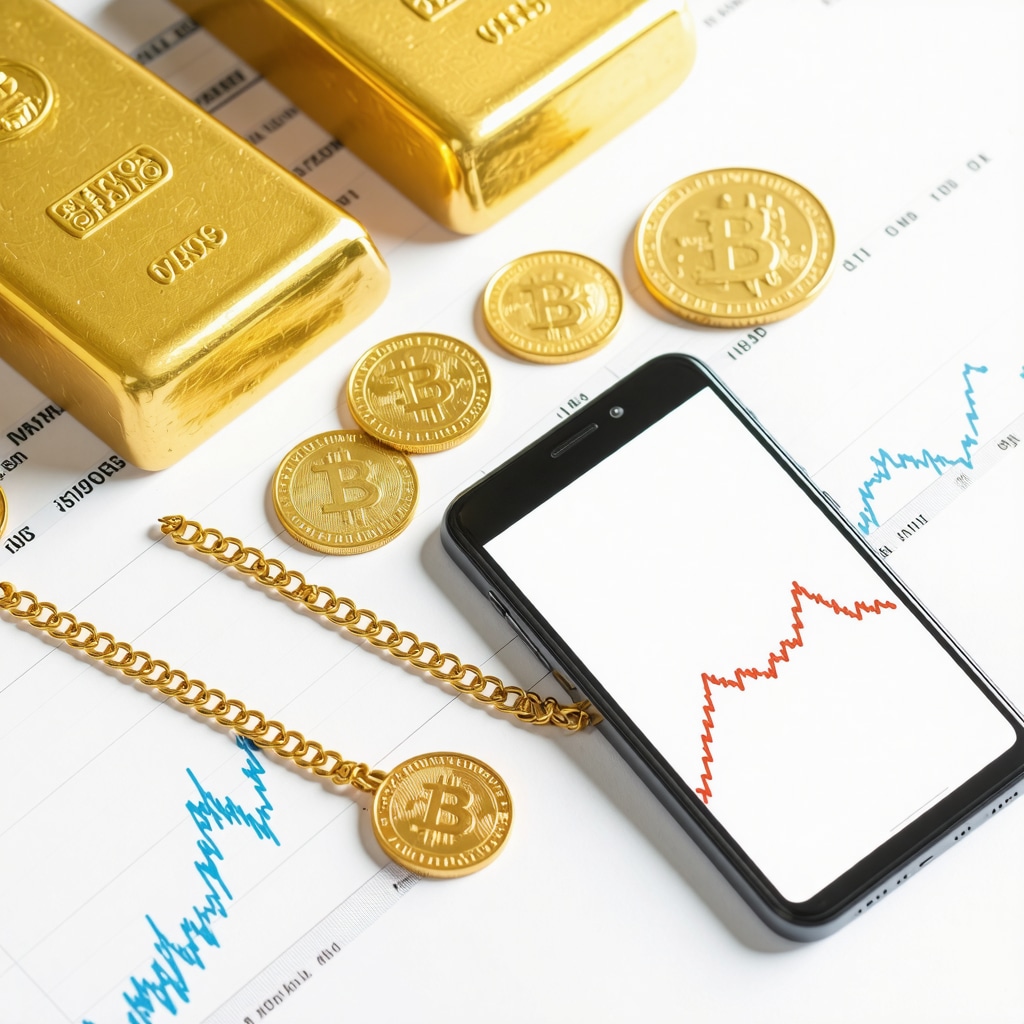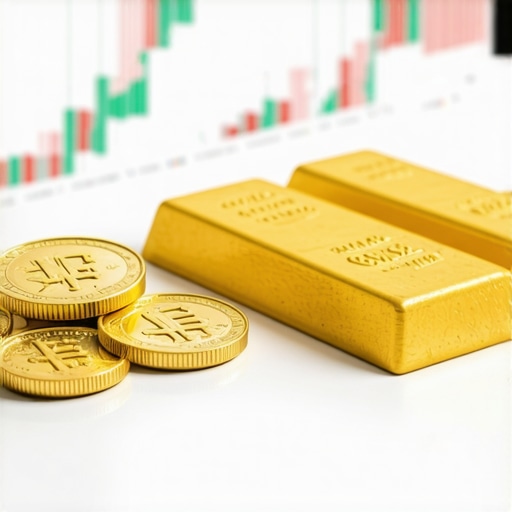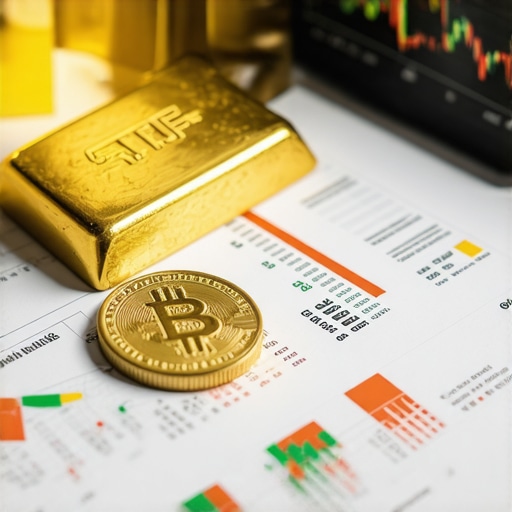Discovering the Golden Path: Why Invest in Gold?
Gold has long stood as a beacon of financial security, a tangible asset that weathers economic storms and market volatility. But with myriad gold investment options available today, understanding which type aligns best with your financial goals requires more than just a cursory glance. Whether you’re safeguarding wealth against inflation or seeking portfolio diversification, choosing the right form of gold investment is crucial.
Shining a Light on Physical Gold: Coins, Bars, and Bullion
Physical gold investments, such as coins and bars, offer a direct and tangible way to own gold. This approach appeals to investors who value the security of possessing the asset outright. However, it requires considerations like secure storage and insurance. For instance, choosing between collectible coins and standard bullion bars involves balancing liquidity and premium costs.
Many beginners find reassurance in physical gold’s tangible nature, but it’s important to note that premiums and dealer fees can impact returns. For a comprehensive overview, explore our guide to physical gold investments: coins vs bars explained.
Digital Gold: ETFs and Mutual Funds as Modern Gateways
Exchange-Traded Funds (ETFs) and mutual funds have revolutionized gold investing by providing liquidity, ease of access, and lower transaction costs. Unlike physical gold, these instruments allow investors to gain exposure without worrying about storage or authenticity.
Gold ETFs track the price of gold closely, making them suitable for those who want to trade gold like a stock. Meanwhile, gold mutual funds may invest in a mix of gold-related assets, including mining companies, adding an element of growth potential alongside gold’s stability. For those looking to start, see our detailed step-by-step guide to buying gold ETFs.
Mining Stocks and Futures: Risk Meets Reward in Gold Investment
Gold mining stocks and futures introduce a different dynamic by combining gold price exposure with operational risks and leverage. Mining stocks often offer dividends and potential capital appreciation but are sensitive to company-specific and geopolitical risks.
Gold futures contracts are sophisticated instruments useful for hedging or speculative purposes, requiring a keen understanding of the commodities market. Investors employing futures must be vigilant about margin requirements and market volatility. Discover effective strategies in our gold futures trading guide.
What Factors Should Guide Your Choice Among Different Gold Investments?
Deciding which gold investment suits your goals involves assessing your risk tolerance, investment horizon, and liquidity needs. Physical gold offers security and permanence but less liquidity. ETFs and mutual funds deliver convenience and diversification, ideal for medium to long-term investors. Mining stocks and futures cater to those seeking higher risk and potential rewards.
Moreover, external factors such as global economic conditions, inflation trends, and central bank policies influence gold’s performance. Engaging with authoritative analyses, like those from the World Gold Council, can provide valuable insights into market drivers.
If you found these insights helpful, share your thoughts or questions in the comments below to join the conversation about the best gold investment strategies for your unique financial journey.
Decoding Gold Market Volatility: Strategies for Savvy Investors
The gold market is inherently volatile, influenced by multifaceted factors including geopolitical tensions, currency fluctuations, and shifts in monetary policy. An expert investor recognizes that volatility is not merely a risk but an opportunity. Employing strategies such as dollar-cost averaging and tactical asset allocation can mitigate risk while capitalizing on price swings.
For instance, during periods of heightened uncertainty, physical gold often experiences increased demand as a safe haven. Conversely, gold ETFs may offer rapid entry and exit points to leverage short-term movements. Understanding these nuances enhances portfolio resilience and growth potential. To deepen your expertise, consider our comprehensive best gold trading techniques for profiting in today’s market.
Global Demand Dynamics: How Emerging Markets Shape Gold Prices
Emerging markets, particularly in Asia, have become pivotal in driving global gold demand. Countries like India and China show robust consumer appetite for gold jewelry and investment products, directly affecting price trends. Additionally, central banks in these regions actively accumulate gold reserves to diversify foreign exchange holdings.
Monitoring these demand trends is essential for forecasting price movements accurately. For example, shifts in cultural festivals or changes in import policies can significantly impact short-term demand and, consequently, price. A nuanced understanding of these factors empowers investors to anticipate market shifts and adjust strategies accordingly.
How Can Investors Leverage Gold’s Role in Inflation Hedging Amidst Changing Economic Policies?
Inflation remains a critical concern globally, and gold’s intrinsic value often positions it as a natural hedge. Yet, the effectiveness of gold as an inflation hedge can fluctuate depending on monetary policy responses. For investors, discerning how interest rate adjustments and fiscal stimulus programs influence gold’s real returns is paramount.
Strategically, blending physical gold with gold ETFs or mining stocks can optimize exposure to inflation protection while balancing liquidity and growth. According to the Investopedia analysis on gold as an inflation hedge, gold tends to preserve purchasing power over the long term but requires context-specific evaluation.
Explore further insights on building wealth through gold by visiting our detailed article on how to build wealth using gold as a hedge against inflation.
Do you have unique experiences or strategies in gold investing? Share your perspective in the comments below, or consider sharing this article with fellow investors aiming to deepen their gold investment acumen.
Harnessing Macro-Economic Indicators: Predictive Tools for Gold Price Movements
Seasoned investors understand that gold prices are not determined in isolation but are deeply intertwined with a spectrum of macroeconomic indicators. Variables such as real interest rates, currency strength, and geopolitical developments serve as critical barometers for anticipating gold price trajectories. For example, a declining U.S. dollar often correlates with rising gold prices, given gold’s status as a dollar-denominated asset. Similarly, persistent negative real interest rates tend to boost gold’s appeal as a non-yielding asset.
Beyond the obvious, incorporating leading economic indicators like Purchasing Managers’ Index (PMI) data or consumer confidence indices can provide nuanced insights into market sentiment shifts that precede gold price adjustments. Employing econometric models and sentiment analysis tools enables investors to refine timing strategies and optimize entry points.
Integrating Gold in Multi-Asset Portfolios: Balancing Risk and Return with Sophisticated Allocation Models
Modern portfolio theory advocates for diversification, and gold’s unique risk-return profile makes it invaluable in this context. However, the challenge lies in determining the optimal allocation percentage to gold that enhances portfolio Sharpe ratios without diluting growth potential. Utilizing advanced techniques like mean-variance optimization and conditional value-at-risk (CVaR) analysis can help tailor gold allocations to specific investor risk appetites and market conditions.
Moreover, dynamic asset allocation strategies that adjust gold exposure based on volatility regimes or macroeconomic signals have shown promise in enhancing long-term portfolio resilience. For instance, increasing gold holdings during economic downturns or elevated inflation expectations can buffer downside risks effectively.
How Can Quantitative Models Enhance Gold Investment Decision-Making?
Quantitative models leverage statistical and mathematical frameworks to analyze historical price patterns, volatility clustering, and correlations with other asset classes. Techniques such as autoregressive integrated moving average (ARIMA) models, GARCH volatility modeling, and machine learning algorithms can detect subtle patterns and forecast potential price movements with higher precision.
These models, when calibrated properly, can assist investors in timing their buys and sells, managing risk through stop-loss triggers, and identifying arbitrage opportunities across different gold investment instruments. Importantly, combining quantitative insights with fundamental analysis yields a robust investment approach that mitigates emotional biases.
For rigorous academic insights, refer to the Journal of Financial Economics study on gold price forecasting and portfolio optimization, which delves into empirical evidence supporting such methodologies.
Environmental, Social, and Governance (ESG) Considerations in Gold Mining Investments
As investors increasingly prioritize sustainable and ethical investment practices, ESG factors have become a critical lens through which gold mining stocks are evaluated. Mining operations with strong environmental stewardship, community engagement, and transparent governance tend to outperform peers in long-term value creation and risk mitigation.
Investors should scrutinize metrics such as carbon footprint, water usage, land rehabilitation efforts, labor practices, and board diversity before committing capital. Integrating ESG scores not only aligns with responsible investing principles but also provides a safeguard against regulatory risks and reputational damage that can adversely affect mining stock valuations.
Leading indices like the MSCI ESG Research on Mining Sector offer comprehensive assessments that can guide informed investment choices in this domain.
If you are looking to deepen your expertise in sophisticated gold investment strategies, consider subscribing to our newsletter for exclusive expert analyses and market updates tailored for advanced investors.
Leveraging Quantitative Analytics: The Frontier of Gold Investment Precision
Incorporating quantitative analytics into gold investment strategies elevates decision-making by harnessing data-driven insights. Sophisticated statistical methods—ranging from ARIMA time-series forecasting to machine learning classifiers—uncover latent market patterns and volatility regimes that traditional analysis may overlook. These models enable investors to anticipate price inflection points, optimize trade timing, and dynamically adjust portfolio allocations in response to evolving market conditions.
Moreover, blending quantitative signals with macroeconomic indicators enhances predictive robustness and mitigates risks associated with behavioral biases. Institutional-grade algorithms increasingly integrate sentiment analysis from financial news and social media, offering nuanced gauges of market psychology affecting gold prices.
How Can Advanced Machine Learning Models Improve Gold Price Forecasting and Risk Management?
Advanced machine learning frameworks, such as recurrent neural networks (RNNs) and gradient boosting machines (GBMs), excel at modeling non-linear dependencies and temporal correlations inherent in gold price movements. By training on extensive historical datasets encompassing price, volume, macroeconomic variables, and geopolitical event markers, these models can generate probabilistic forecasts with superior accuracy compared to conventional econometric approaches.
In risk management, these models assist in early detection of regime shifts and tail-risk events, enabling preemptive portfolio rebalancing or hedging maneuvers. Their capacity to synthesize heterogeneous data sources facilitates comprehensive scenario analysis, crucial for navigating gold’s complex market dynamics.
For a rigorous academic exploration of these methodologies, consult the Journal of Financial Economics study on gold price forecasting and portfolio optimization.
Integrating ESG Metrics: Navigating Ethical Investment in Gold Mining
Environmental, Social, and Governance (ESG) considerations have become pivotal in discerning the long-term viability and ethical standing of gold mining enterprises. Investors committed to sustainable finance prioritize companies demonstrating exemplary stewardship in carbon emissions reduction, responsible water management, and community empowerment initiatives.
ESG integration also serves as a risk mitigation tool, guarding against regulatory sanctions, operational disruptions, and reputational damage. The MSCI ESG Research on the Mining Sector provides comprehensive metrics that facilitate granular assessment of mining firms’ sustainability profiles, empowering investors to align portfolios with global sustainability standards and stakeholder expectations.
Global Macro Trends and Gold: Navigating Complex Interdependencies
The intricate interplay between global macroeconomic forces and gold pricing necessitates sophisticated analytical frameworks. Factors such as currency fluctuations, real interest rate trajectories, geopolitical risk indices, and central bank gold reserve policies interconnect dynamically, creating multifaceted price drivers.
Seasoned investors employ econometric models incorporating leading indicators like Purchasing Managers’ Index (PMI) and consumer confidence to anticipate demand shifts and price momentum. Additionally, monitoring emerging market consumption trends and fiscal policy shifts provides foresight into structural demand dynamics.

What Are the Most Effective Strategies to Exploit Gold’s Sensitivity to Macroeconomic Variables?
To capitalize on gold’s responsiveness to macroeconomic variables, investors should adopt a multi-layered approach combining tactical asset allocation with derivative instruments. Utilizing gold futures and options can hedge against anticipated volatility induced by economic announcements or geopolitical events. Simultaneously, adjusting physical and ETF holdings based on inflation expectations and currency outlooks fine-tunes portfolio exposure.
Advanced portfolio models that incorporate regime-switching frameworks enable dynamic shifts in gold allocation contingent on macroeconomic environments, enhancing risk-adjusted returns. Staying abreast of central bank policies, particularly quantitative easing measures and interest rate decisions, is crucial for timely positioning.
Continuous education and engagement with authoritative sources like the World Gold Council ensure investors remain informed of evolving market fundamentals and strategic innovations.
Embark on mastering these advanced strategies by subscribing to our expert newsletter, where cutting-edge research, market analytics, and actionable insights converge to empower your gold investment journey.
Frequently Asked Questions (FAQ)
What are the primary differences between physical gold and gold ETFs?
Physical gold involves owning tangible assets like coins or bars, offering direct control and a hedge against systemic risk but requiring secure storage and incurring premiums. Gold ETFs provide liquidity, ease of trading, and no storage worries, tracking gold prices closely but exposing investors to counterparty risk and market fluctuations.
How do macroeconomic indicators influence gold prices?
Gold prices respond to variables such as real interest rates, currency strength, geopolitical tensions, and inflation expectations. For instance, declining real interest rates and a weaker U.S. dollar typically boost gold demand, while geopolitical uncertainty often increases gold’s safe-haven appeal. Advanced investors monitor indicators like PMI and consumer confidence to anticipate price shifts.
Can gold effectively hedge against inflation in varying economic environments?
Gold traditionally preserves purchasing power over the long term, acting as a natural inflation hedge. However, its effectiveness can vary with monetary policies, such as interest rate changes or fiscal stimulus. Combining physical gold with ETFs or mining stocks can optimize inflation protection while maintaining liquidity and growth potential.
What role do ESG factors play in gold mining investments?
ESG considerations are increasingly critical, as mining companies with robust environmental stewardship, social responsibility, and governance tend to deliver sustainable long-term value and mitigate risks. Investors should evaluate carbon footprint, labor practices, community impact, and governance transparency to align with ethical standards and reduce exposure to regulatory or reputational risks.
How can quantitative models improve gold investment strategies?
Quantitative models, including ARIMA, GARCH, and advanced machine learning techniques, analyze historical data and market patterns to forecast gold price movements and volatility. They assist in timing trades, managing risks, and identifying arbitrage opportunities, complementing fundamental analysis to enhance decision-making precision.
What are the risks and rewards associated with investing in gold mining stocks and futures?
Gold mining stocks offer potential dividends and capital appreciation but carry operational, geopolitical, and sector-specific risks. Futures contracts provide leverage and hedging capabilities but require sophisticated understanding due to volatility and margin requirements. Both instruments suit investors with higher risk tolerance seeking amplified returns.
How should gold be integrated into a diversified portfolio?
Gold’s unique risk-return profile makes it a valuable diversification tool. Optimal allocation depends on individual risk tolerance and market outlook. Employing portfolio optimization techniques and dynamic allocation strategies can enhance risk-adjusted returns by increasing gold exposure during economic downturns or inflationary periods.
How do emerging markets impact global gold demand and pricing?
Emerging markets, notably India and China, drive significant demand for gold jewelry and investments, influencing price trends. Central bank purchases in these regions also affect supply-demand dynamics. Monitoring cultural, policy, and economic developments in these markets is essential for accurate price forecasting.
Are there practical strategies to manage gold market volatility?
Yes. Techniques like dollar-cost averaging, tactical asset allocation, and using derivatives such as futures and options help manage volatility. Physical gold often gains in uncertain times, while ETFs allow rapid market access. Understanding market drivers and employing diversified approaches reduces downside risks.
How can investors stay informed about evolving gold market fundamentals?
Engaging with authoritative sources like the World Gold Council, MSCI ESG Research, and academic journals provides up-to-date market analyses, sustainability metrics, and quantitative research. Subscribing to expert newsletters and following macroeconomic developments ensures timely insights to inform strategic decisions.
Trusted External Sources
- World Gold Council – The foremost authority on gold market data, trends, and investment insights, offering comprehensive research on demand drivers and macroeconomic impacts.
- MSCI ESG Research on Mining Sector – Provides in-depth evaluations of environmental, social, and governance factors in mining companies, crucial for sustainable investment decisions.
- Journal of Financial Economics – Publishes rigorous academic studies on gold price forecasting, portfolio optimization, and quantitative investment methodologies, underpinning evidence-based strategies.
- Investopedia – Gold as an Inflation Hedge – Offers expert analyses and foundational knowledge on gold’s role in inflation protection within diverse economic contexts.
- International Monetary Fund (IMF) and World Bank Reports – Deliver macroeconomic data and policy analyses that influence global gold markets and investor perspectives.
Conclusion
Gold remains an indispensable asset for investors seeking portfolio diversification, inflation protection, and exposure to unique market dynamics. Understanding the nuances across physical gold, ETFs, mining stocks, and futures empowers investors to tailor strategies aligned with their risk tolerance and financial objectives. Integrating macroeconomic insights, ESG considerations, and quantitative analytics further refines decision-making, enhancing resilience amid volatility. Staying informed through trusted sources and adopting sophisticated allocation models ensures that gold investments contribute meaningfully to long-term wealth preservation and growth. Embrace these expert strategies and deepen your knowledge by exploring related expert content, sharing your experiences, or joining discussions to elevate your gold investment acumen.










